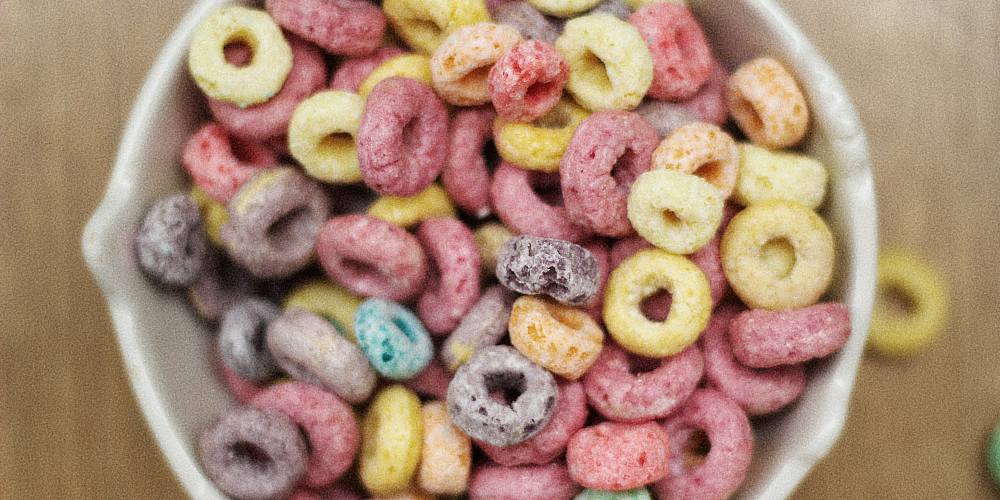- Ultraprocessed foods are linked to liver disease and insulin resistance in obese children, with high consumption associated with metabolic disorders
- These foods are low in nutrients and high in unhealthy additives, contributing to poor health outcomes
- The prevalence of metabolic dysfunction-associated steatotic liver disease (MASLD) is increasing among adolescents
- Insulin resistance is a key factor in metabolic health issues, underscoring the importance of choosing healthy foods
- Ways to encourage children to increase their intake of whole, natural foods are outlined below
(Mercola)—It’s long been acknowledged that obesity in American adults is a public health problem. However, there’s a related issue on the rise — childhood obesity. According to the U.S. Centers for Disease Control and Prevention (CDC), around 1 in 5 children and adolescents are now obese.1
Much of the reason for the rise in childhood obesity is the preference for ultraprocessed foods. An estimated 67% of calories in children’s and teenagers’ diets come from these unhealthy products.2 In addition, research is showing that these foods are causing liver problems in children.
The Threat of Ultraprocessed Foods to Liver Health
Could the ultraprocessed foods your child regularly consumes be silently fueling serious liver diseases? According to a study3 published in Nutrients, the answer is a resounding yes, depending on the food you give them. Specifically, high intake of ultraprocessed foods is closely linked to metabolic-associated steatotic liver disease (MASLD), insulin resistance, and increased adiposity in obese youth. MASLD is of particular concern. According to the researchers:4
“MASLD is a multisystem disease affecting various metabolic pathways and is strongly linked to insulin resistance and obesity. Mechanistically, fat overload in the liver may lead to the accumulation of diacylglycerol, which activates protein kinase Cε (PKCε), impairing insulin signaling and leading to insulin resistance.
Body fat, particularly trunk fat, promotes insulin resistance through increased hepatic lipogenesis, leading to metabolic disturbances in the liver. When insulin resistance occurs, the oxidation of fatty acids in the liver decreases, promoting further fat accumulation and worsening hepatic steatosis. This process disrupts insulin signaling in the liver and increases fat accumulation, triggering inflammatory responses.”
For the study, researchers selected 149 participants aged 8 to 17 years old who were assessed for their dietary intake using detailed food diaries. Other biomarkers were taken as well, such as body weight and blood results.5
To measure the liver fat percentage, a technique called magnetic resonance imaging proton density fat fraction (MRI-PDFF) was used. This noninvasive method provides a detailed image of the liver. A liver fat percentage exceeding 5% is typically indicative of MASLD.6
The study, which lasted six months from baseline through follow-up, revealed that higher consumption of ultraprocessed food was strongly associated with increased insulin levels, a hallmark of insulin resistance. Furthermore, the research established a clear correlation between ultraprocessed food consumption and MASLD.
Children and adolescents who had the highest intake of ultraprocessed food were 1.75 times more likely to develop MASLD compared to those who ate less. The risk was even more pronounced for moderate-to-severe MASLD, where high ultraprocessed food consumers faced over four times the likelihood of developing advanced liver disease.
Other Research Highlights the Growing Concern of MASLD
The Nutrients study is not the only one to notice the increasing cases of MASLD among the youth. A study7 published in The Journal of Clinical Endocrinology & Metabolism reveals that an alarming 23.77% of U.S. adolescents aged 12 to 19 years are grappling with MASLD.
Using data taken from the National Health and Nutrition Examination Survey between 2017 and 2020, researchers noted that participants with MASLD were also predisposed to other health issues, such as increased triglyceride levels, elevated glucose levels and obesity.
While the study didn’t go into the specifics of the cause, the answer is already right in front of everyone — ultraprocessed foods. Again, as much as 67% of a child’s calories come from these products.
Tips to Help Reduce Your Child’s Intake of Ultraprocessed Food
While kids enjoy the taste of ultraprocessed foods such as frozen pizzas and fish sticks, keeping up this habit will eventually ruin their liver health, as well as their overall health. Ultimately, your goal is to reduce — and eventually eliminate — ultraprocessed foods in your children’s diet, and this requires a multifaceted approach:
- Eliminate seed oils — Your first order of business is removing all seed oils. This ingredient is loaded with harmful linoleic acid (LA), which I believe is the most destructive ingredient in our modern diet today. A majority of ultraprocessed foods contain high amounts of LA, so make this your top priority.
- Replace ultraprocessed foods slowly — Gradually replace the ultraprocessed foods your child eats with whole foods. Start by replacing a snack or meal with whole foods, such as swapping out chips for fresh fruit. A slow approach helps children get used to new flavors without feeling overwhelmed.
- Get children involved — One powerful technique that will inspire children to eat more fresh food is by inviting them in meal planning and preparation. Let your kid choose recipes, and even shop for ingredients and cook the food. This way, they’ll develop a sense of ownership and pride in their food.By getting them involved, their willingness to try healthier meals will grow. Plus, teaching them to cook builds valuable life skills at a young age. Start by letting them with simple tasks, such as washing the produce, then move on to more complicated chores as they grow older.
- Change your family’s eating habits — The way your family eats during mealtimes will significantly impact your child’s consumption of ultraprocessed foods. Encourage them to eat meals together without distractions, such as TV or phones. Also, teach them to savor each bite of their food, as well as making them aware of their body’s hunger and fullness cues. This helps avoid mindless snacking while allowing them to build a healthy relationship with eating.
- Engage with the people around you — Community-based programs, such as food assistance benefits from local farmers markets, community gardens and cooking classes will contribute to a culture focused on whole-food consumption. These programs also increase the availability of fresh produce, which helps families to make better choices.
- Take advantage of technology — There are many available tools nowadays that help educate children and track their eating habits. For example, there are now apps that allow children to scan barcodes in food to learn about the ingredients in an engaging way. Some apps even go beyond by turning healthy eating into a game.
Removing Ultraprocessed Foods — The Foundation of Your Child’s Health
The evidence is clear — ultraprocessed foods will harm your child’s health in the long run. While designed to be convenient and appetizing, these products are wreaking havoc on their young minds and bodies, disrupting natural bodily processes, altering gut microbiomes and creating nutrient deficiencies. The health care costs are also alarming. According to the CDC, childhood obesity costs the U.S. economy $1.3 billion annually.8
While change starts at home, society must also walk in step to protect the long-term health of our youth. Advocating for policy changes, better education and environmental changes will result in a robust framework for reducing children’s consumption of ultraprocessed foods.9
- 1, 8 CDC, Childhood Obesity Facts
- 2 NPR, May 28, 2023
- 3 Nutrients 2024, 16(20), 3524, Abstract
- 4 Nutrients 2024, 16(20), 3524, Discussion
- 5, 6 Nutrients 2024, 16(20), 3524, Materials and Methods
- 7 The Journal of Clinical Endocrinology & Metabolism, dgae553, Abstract
- 9 BMJ 2023;383:e075294



